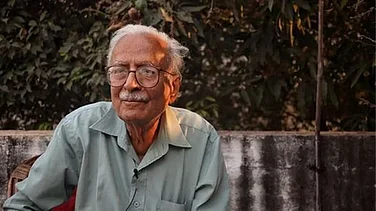
Piyush Pandey redefined Indian advertising by infusing it with local language, culture, and emotion.
He bridged the gap between art and copy, making ads more relatable and distinctly Indian.
His influence transcended advertising, inspiring generations across business, media, and education.
I first met the legendary Piyush Pandey over three decades ago at his brother Prasoon's home, where we were both connected through our time at NID. My first impression was that this man knew how to disarm you in the first engagement! He had a warm charisma, a sharp sense of humour, and, of course, an iconic moustache. One of his standout qualities was his unique ability to forge genuine connections both within his profession and in the wider world.
He understood that effective communication wasn’t just about delivering the right message, it was equally about listening, to his own team, clients, or ultimately the consumer. Clients placed immense trust in him, recognising that he was more than just a representative of the agency, he cared deeply about their interests beyond the usual commercial concerns. In a world often driven by profit, Piyush's approach was refreshingly different.
Piyush was not just an advertising genius, he inspired generations of copywriters to rethink how they perceived Indian consumers. Traditionally, advertising was often centred around art directors as craftsmen (the era of cut and paste), while copywriters were seen as idea generators. Most writers hailed from elite institutions such as St Stephen’s-Delhi/Xavier’s-Bombay/Presidency-Calcutta, where a significant portion of these students were English-speaking and came from privileged or affluent backgrounds (this Jaipur small-town boy also went to St Stephen’s). In the advertising industry, the focus was on translating English-language thoughts and concepts into Hindi and other colloquial languages. This was also the era when India was still grappling with a socialist economy, and Indian advertising operated within this pre-digital landscape, before the arrival of the free market economy.
Today, whether in print, on television, or online, we can often trace an advertisement's influence back to Piyush. He has inspired generations of creatives, embedding the essence of Indian culture and identity into advertising. Previously, much of the advertising was shaped by American styles, particularly from Madison Avenue, which influenced the craft through storytelling, psychological insights, and humour, with a significant Jewish influence (ad photography too suffered from this, thanks to the Bible, the Black Book). Piyush broke this mould with innovative strategies that resonated with the Indian audience. His unique approach transformed the advertising landscape, allowing for a deeper connection to local culture while maintaining the effectiveness of compelling narratives in marketing.
His impact extends far beyond the advertising world, he has touched countless lives across various fields, including business and social science schools. People spend time reading "How to Win Friends and Influence People/Good to Great/What They Don’t Teach You at Harvard Business School” while Piyush was the living, breathing example of this and so much more, a living testament to inspiration, leaving behind a profound legacy that will continue to influence future generations.
Samar Jodha is a Photographer and artist based in Delhi.























